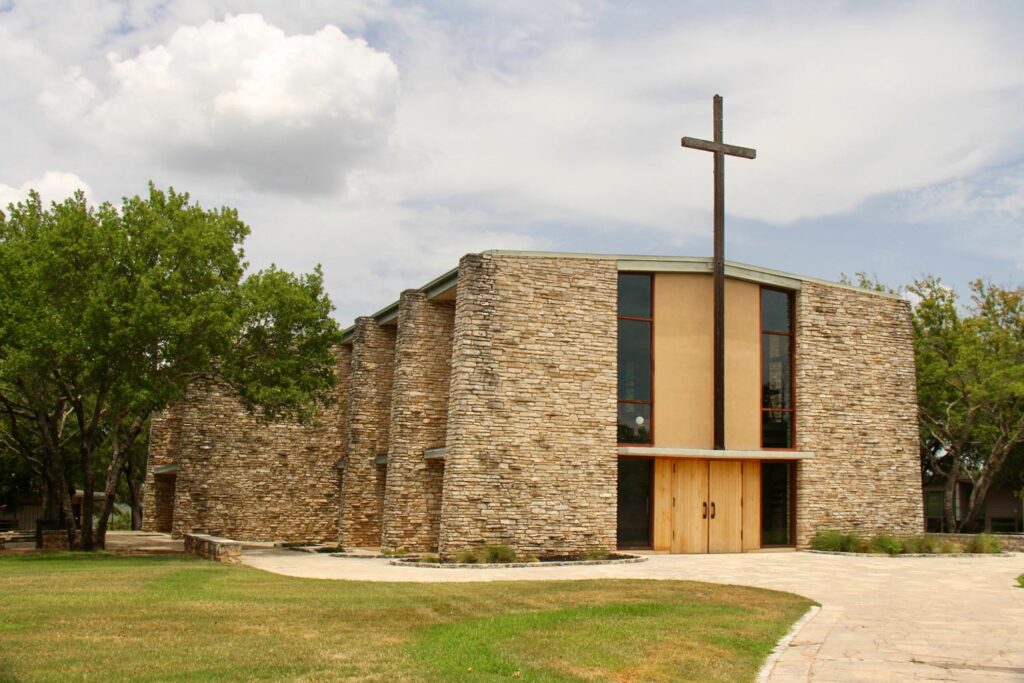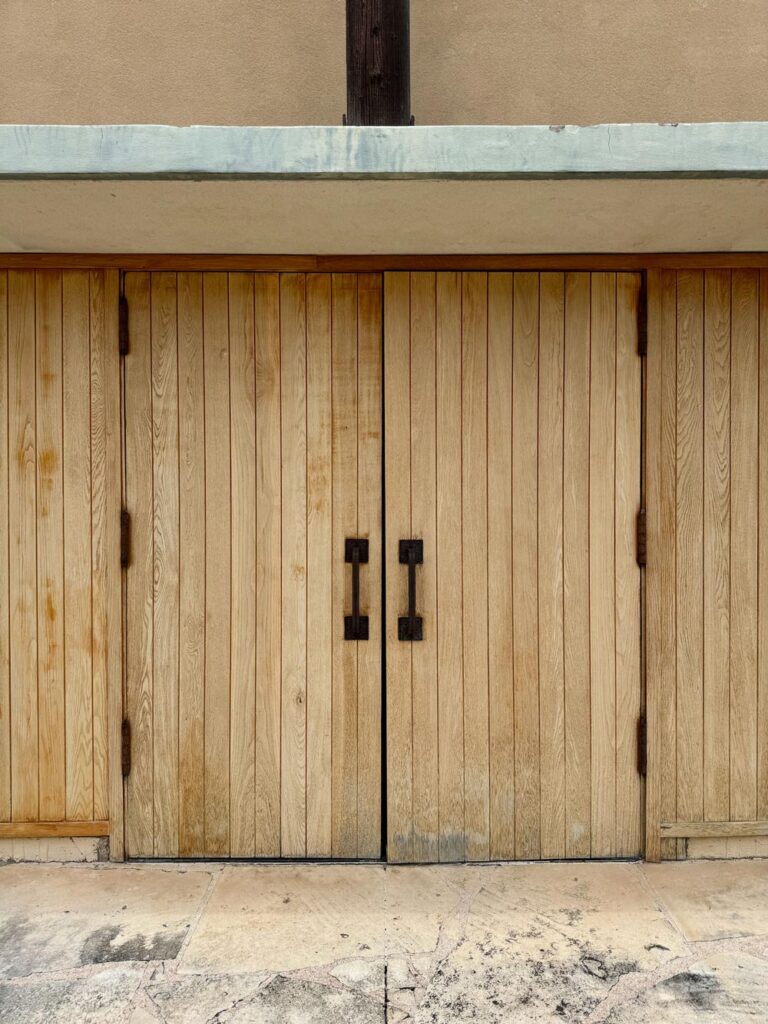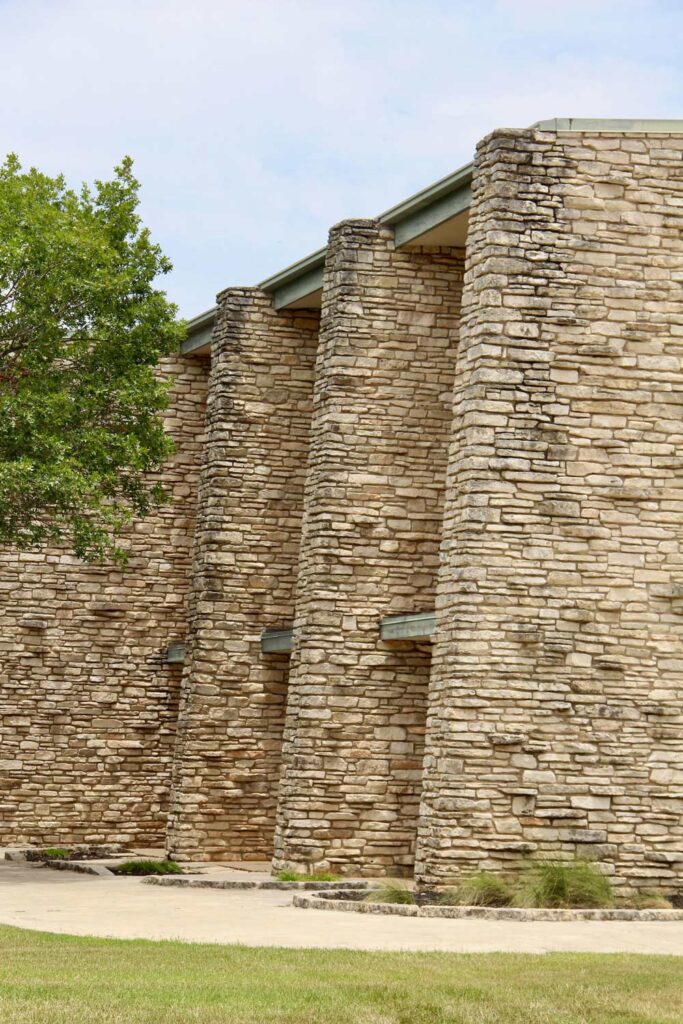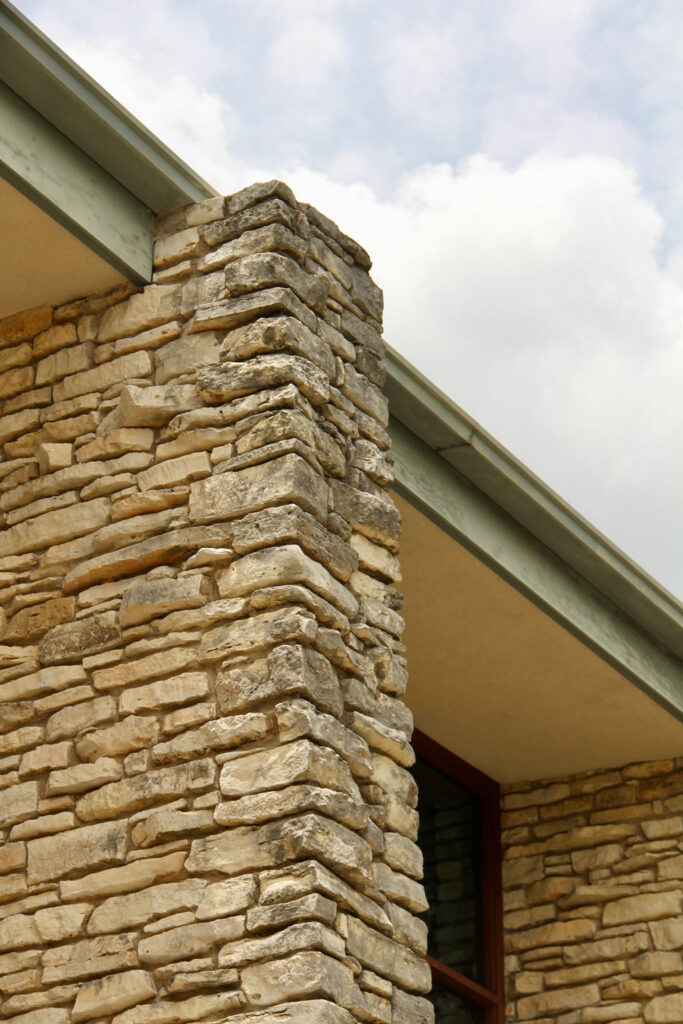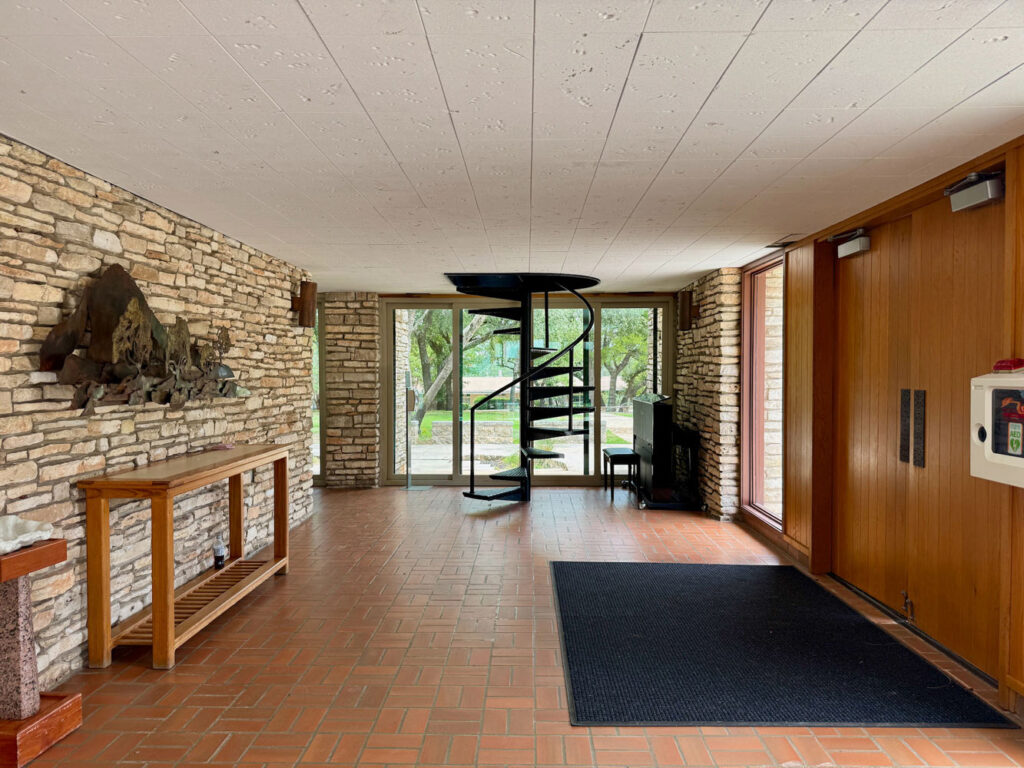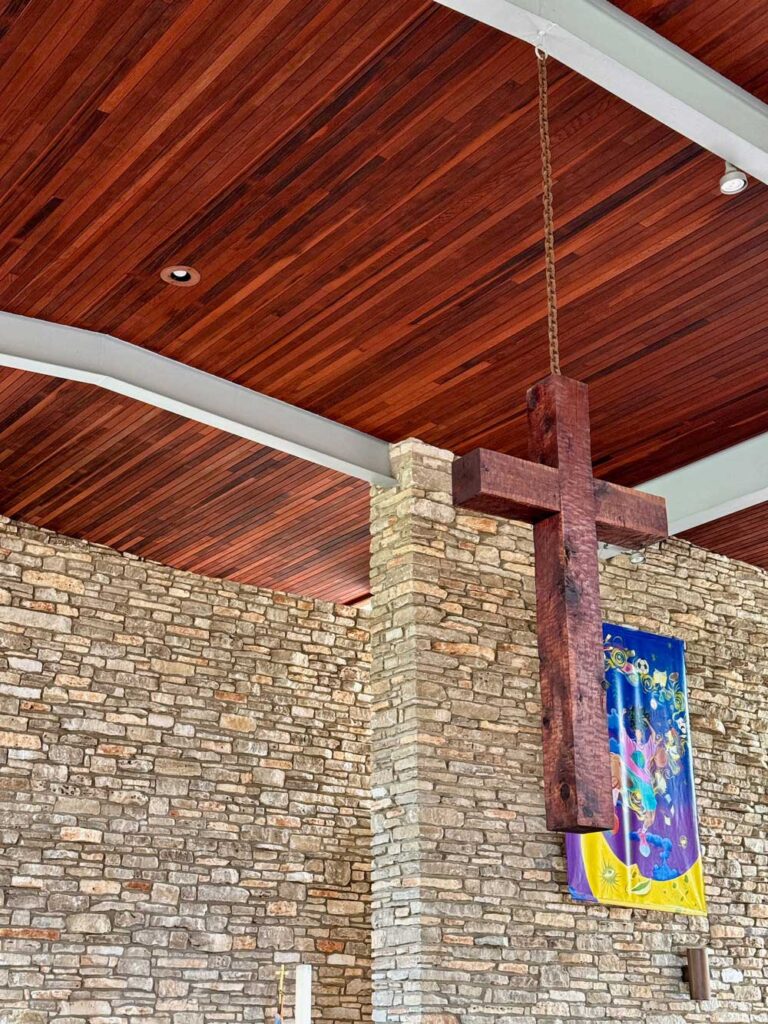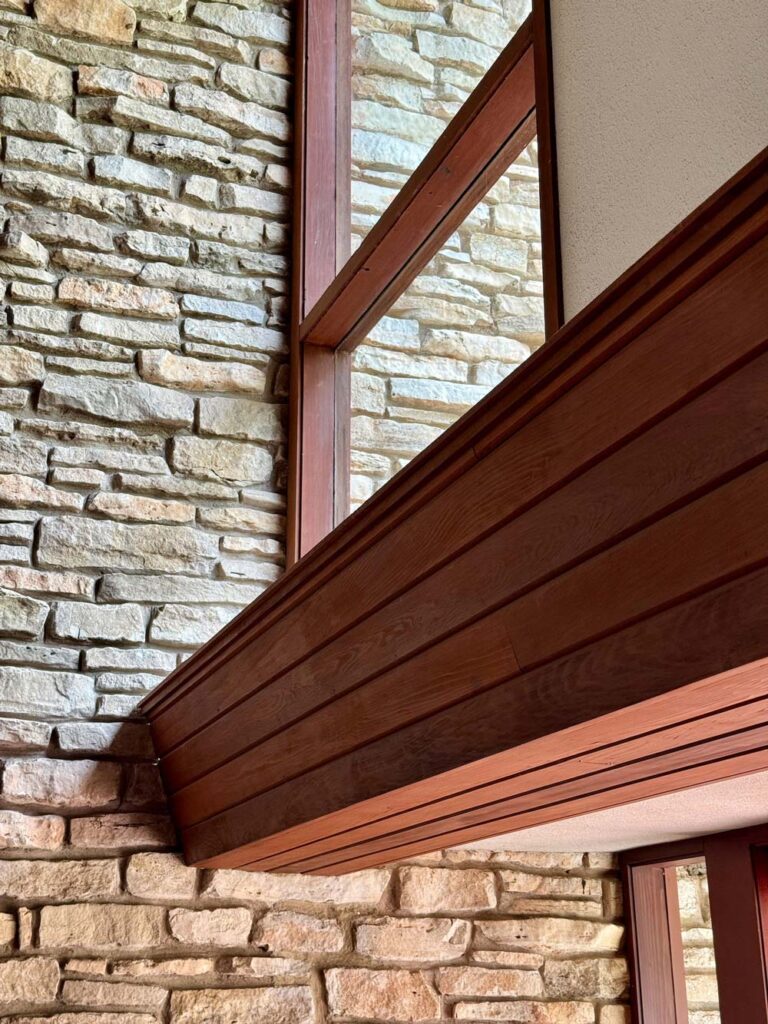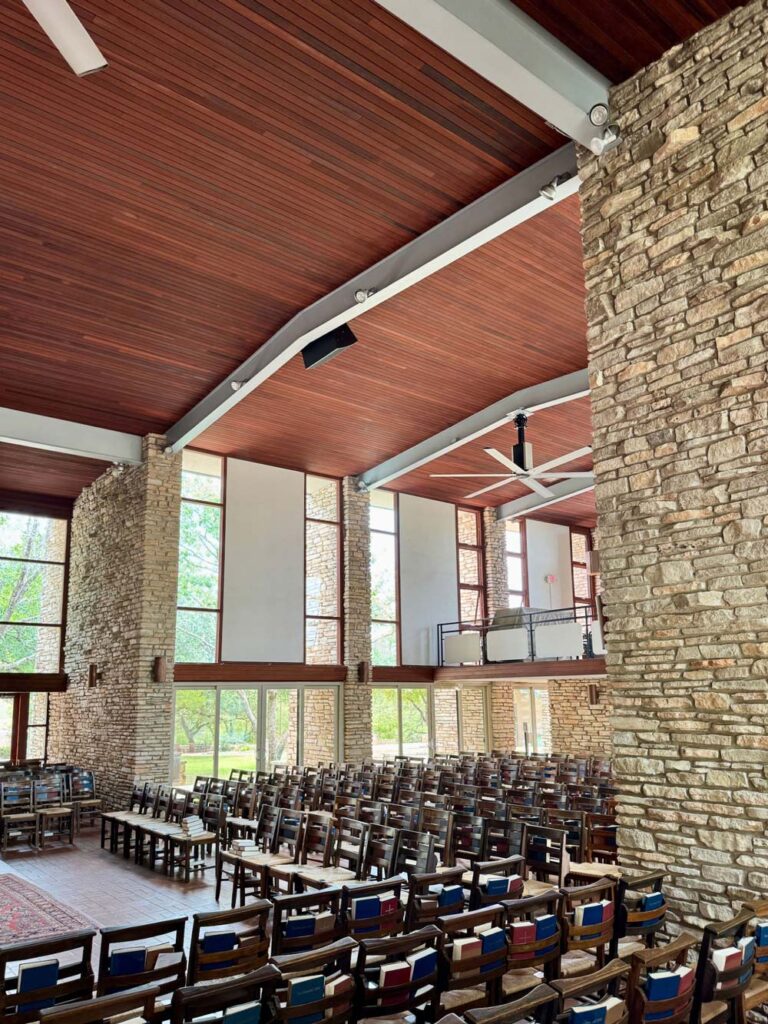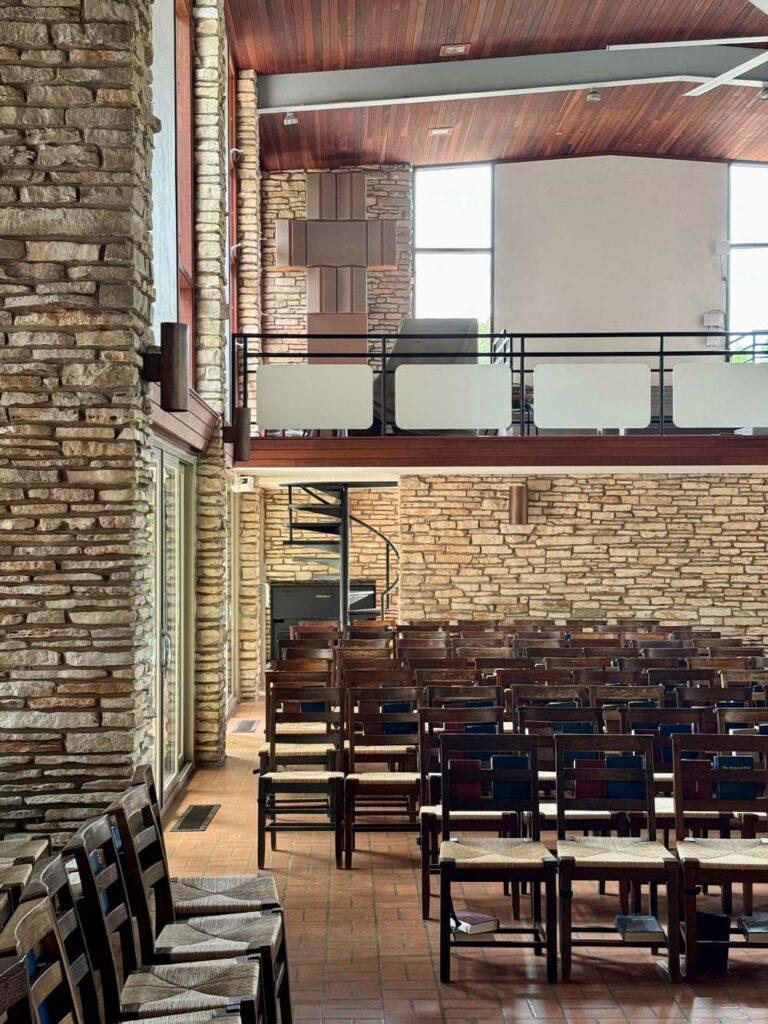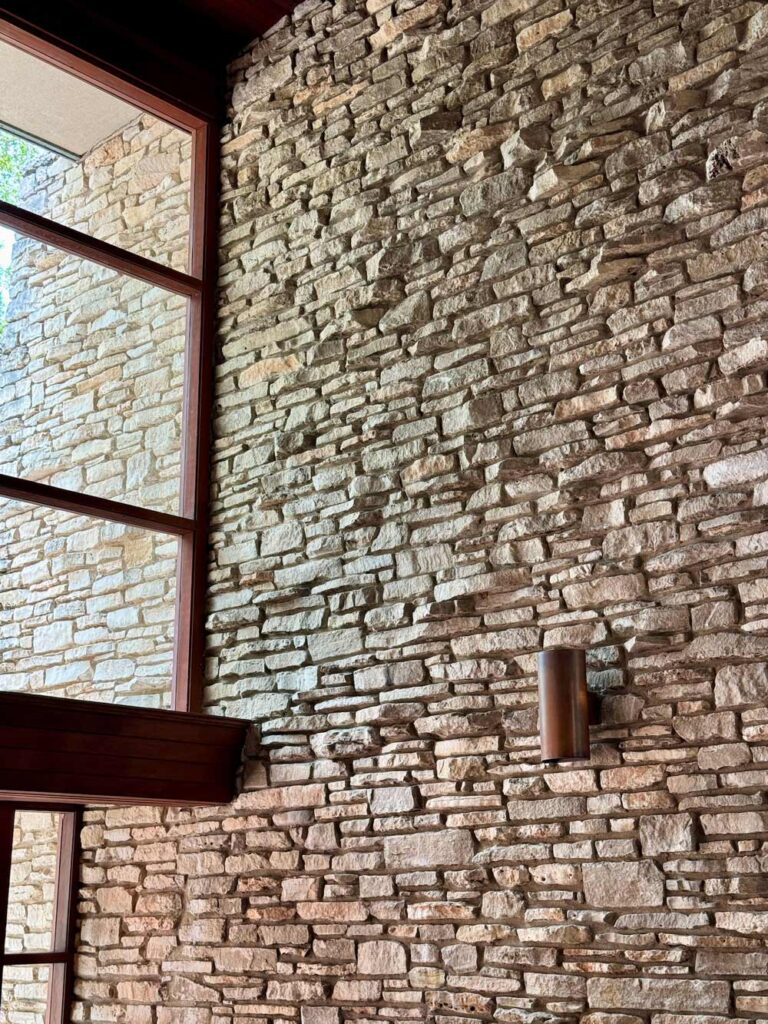- Built:
- 1953
- Architect:
- Fehr & Granger
- Style:
- Mid-Century Modern
Description
Please be advised that the campus and chapel are not open to the public.
Sited at the highest point on campus, St. Stephen’s Chapel is a 5,000-square-foot structure with a flattened gable roof, rusticated limestone façade, and wood-framed windows set between a series of buttress-like fin walls. The interior spaces include an entry vestibule with a mezzanine above, double-height sanctuary, and a small sacristy.
Placemaking
When St. Stephen’s Episcopal School opened its doors in 1950 to a class of 60 students, it was the first co-ed Episcopal school in the United States; the institution would later become the first racially integrated boarding school in the American South. From its inception, the school’s forward-looking ethos was reflected in its architecture.
Rather than mimic the Gothic style of Old-World institutions, both the campus and the chapel at its core were designed according to the principles of Regional Modernism, in which the clean lines and lack of ornamentation of the International Style were filtered through the lens of local materials, climate, and topography. Across the board, emphasis was placed on bringing the outdoors in, capitalizing on the natural beauty of the Hill Country. With the chapel as its physical and spiritual center, the campus radiates outward in concentric zones that follow the natural contours of the site. The chapel is ringed by academic buildings, which are in turn surrounded by a “residential district” of dormitories and student amenities, with athletic fields and facilities scattered along the periphery.
Approaching the chapel, the most noticeable quality is its simplicity: a shallow gable roof; stacked limestone walls; glass windows; wood accents. At the center of the south elevation, a pair of wooden doors serves as a spring point for a soaring wooden cross—its shadow captured by a stucco backdrop—that marks the peak of “The Hill.” The only ornamentation is the fine metal pulls on the door, and perhaps the individual stones that occasionally project from the heavy masonry walls (all of which were quarried on site). The stone fin walls, a grounded take on the Gothic buttress, blend together in a mass that belies the lightness within.
Inside the entry vestibule, its low ceiling riddled with random impressions (perhaps by restless students), a steel spiral staircase leads up to the mezzanine level. Directly opposite the entrance, a solid stone wall directs visitors to turn and enter the sanctuary at either side. Stepping into this double-height space, the sensation is one of lightness and serenity. Walls of glass provide views to the oak groves on either side; sunlight washes along the limestone fins and reflects off copper sconces; white plaster walls and exposed beams contrast with the dark wood ceiling and deep red Saltillo tile floor. Another large wooden cross is suspended above the altar.
The architecture is both distinctive and economical. The exposed steel structure is similar to that of the school’s gym, here employed in a cruciform plan to great effect. A limited material palette places emphasis on introspection. The space is not air-conditioned; in each bay, sliding glass doors and operable windows may be opened to capture the prevailing east-west breezes. Designed to seat 300 people, the chapel is now called upon to serve over 700 students, faculty, and staff. An upcoming expansion faces a difficult challenge: doubling the size of the sanctuary while preserving its intimate and tranquil character. – Bud Franck, AIA
Architect's Description
“We have analyzed the site—the materials at hand—and have purposely avoided the easy route of presenting a sweet, ivy-covered perspective which is used much too often to sell an architecture that has an archaeological charm. We believe St. Stephen’s should have an alert and vigorous architecture. We hope that an open, flexible plan—light, clean-cut buildings in their setting of sky and hills above the river—will express plainly man’s striving and God’s purpose.” – Arthur Fehr, FAIA & Charles Granger, FAIA
Bud Franck, AIA
